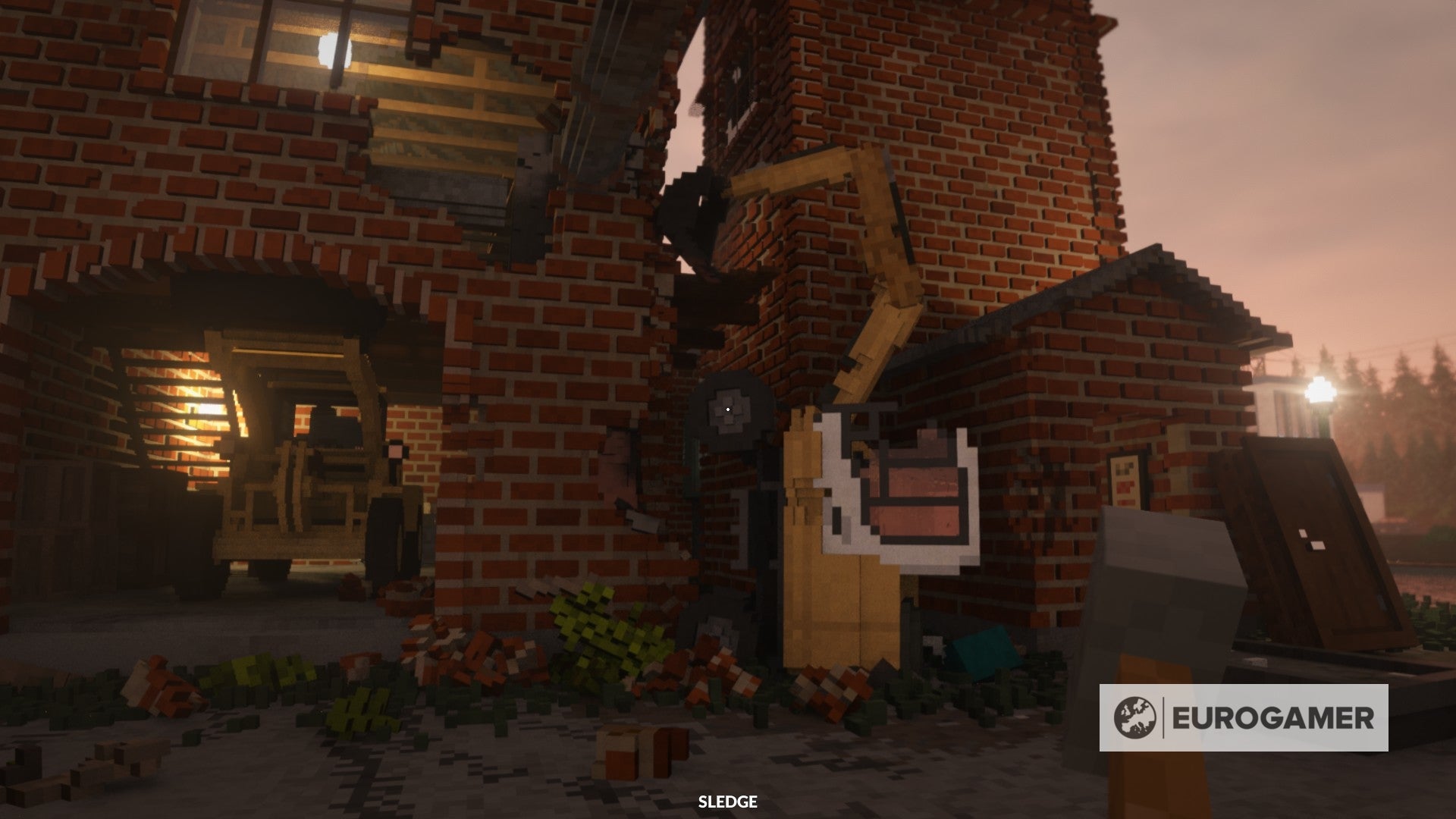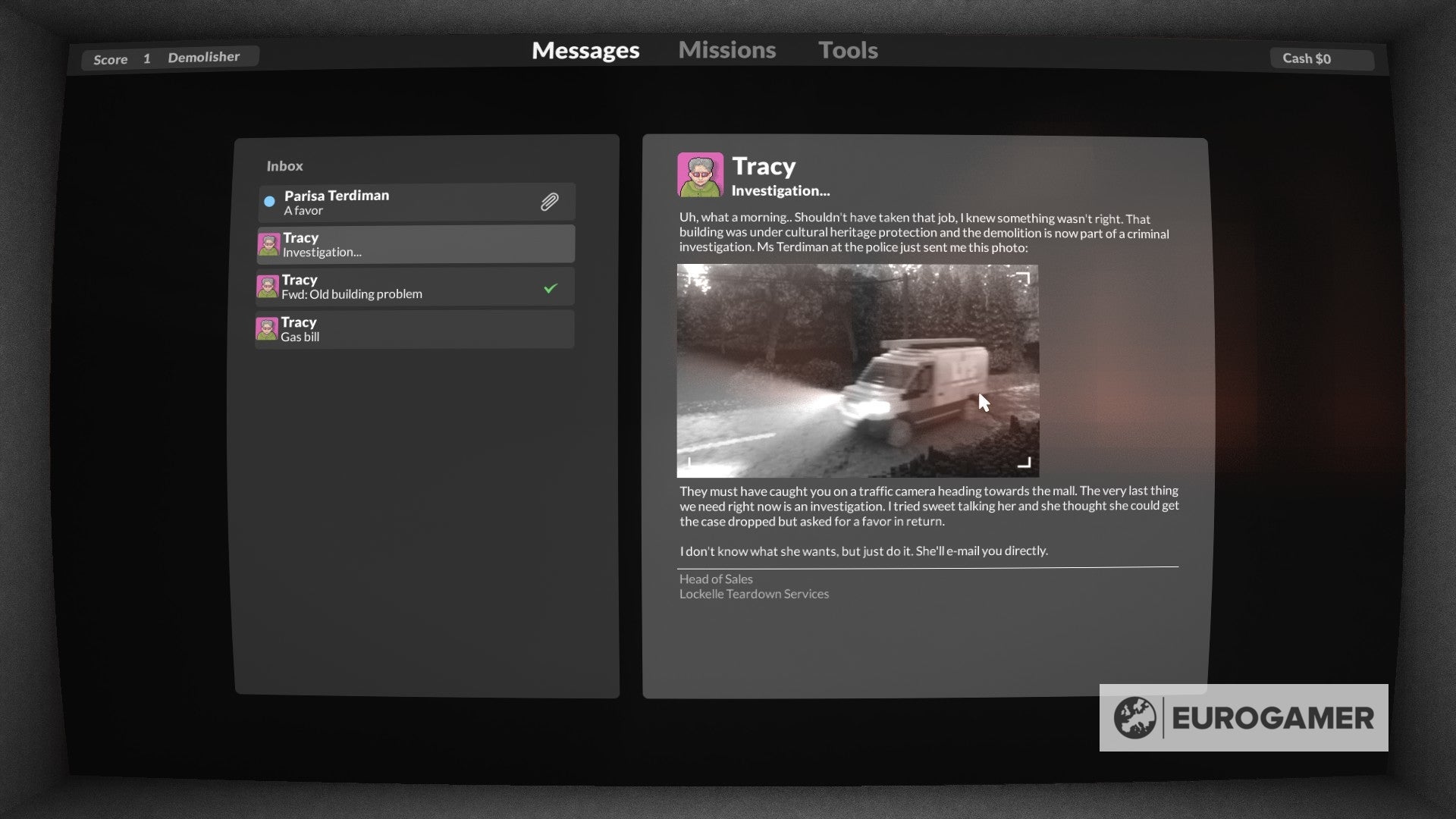It’s magical, actually: a voxely world that’s just ready to crumble if you find the right way to approach things. You play as a thief of sorts, and each mission drops you into a sandbox with a simple sort of objective - get this, destroy that. You have as long as you want to scope things out and plan how you’re going to tackle things, and then you’re off. The magic may be in how things come down - the way a wall collapses as you ease a dumptruck through it, or even the way a window splinters into tinkling pieces after a blow from your hammer - but what keeps me playing is a totally unexpected rigour to the whole thing. After a few opening missions alarms come into play: alarms are triggered after you start ticking off your objectives and they give you a certain amount of time to do what you’ve got to do and escape before it’s an instant game over. This means that a game that’s initially about busting stuff up with no thought for tomorrow is actually a game about altering the environment to create the clearest route between a handful of scattered points. I love this because it invokes one of my favourite books of the last few years, A Burglar’s Guide to the City, by the Bldgblog editor Geoff Manaugh. This is one of those books that I have to keep rebuying because I keep giving copies away. I’ve written about this book before I think, but Manaugh’s central point is that burglars are sort of super-users of the urban environment. They see possibilities where other people just see a wall or a window or a JCB. They aren’t constrained by the things the rest of us are constrained by, and yet they still have that rigour as they go about their objectives. Very Teardown. I went to see Geoff Manaugh give a talk about his book a few years back. He was wonderful - wide-ranging and funny. What I really remember is the Q&A though. In my memory almost all the questions were about Die Hard, a classic for sure, and a film in which the burglars are, well, super-users of the urban environment. I wonder what Manaugh would make of Teardown. Bertie: I am amazed there’s a story at all. This is a game about smashing stuff up - how do you put a story on that? Yet there it is. You’re some kind of demolisher-slash-thief, a kind of underworld figure for hire, and yet you live in the most mundane world, operating out of a bare warehouse in the arse end of nowhere, with probably no heating, and for some company which has bills to pay. Boring bills, bills like electricity and water. So off you go to do whatever you’re told by your assistant to keep the lights on. I didn’t even read the emails, to be honest, I just wanted to smash stuff up. So on the first mission I was given, I did exactly that: smashed the crap out of a house with whatever machinery was nearby. And to my surprise: I completed the mission. It was exactly what I was supposed to do. So I did the same on the next mission. I found some computers by bulldozing my way to them, not so much a cat burglar, more a rhino burglar, and it worked again. To see how I did on those missions, I watched the news. I, quite literally, turned on the TV in my chilly warehouse to see a special report about a listed building (yeah, sorry about that) being totalled in the dark. The phantom smasher-upper was at it again. The game starts to take a bit more shape after that, as Chris mentioned, and becomes about plotting routes through a level and then establishing them by smashy means. But the campaign never loses sight of your being this kind of urban legend people try to keep out. A kind of fox being kept away from chicken runs. Alarm systems are installed and locks put on buildings and barriers placed in your way. But they can’t keep you out. You’re this kind of irresistible force and it’s almost spiteful what you can do to anything in your way. It’s a story I really didn’t expect, and it works so well. It drops a kind of stealth template on a game which really ought to be on the opposite end of the spectrum. A stealth game which goads you into recklessness with every JCB you spot parked in a garage nearby. Frankly, it’s inspired.



